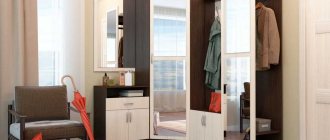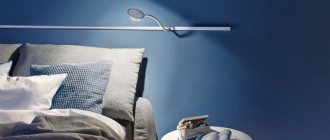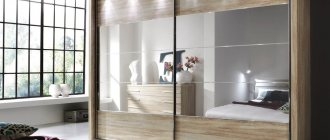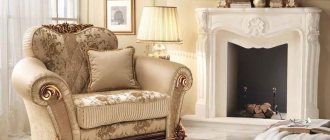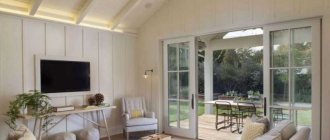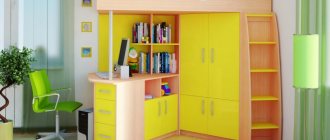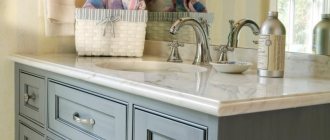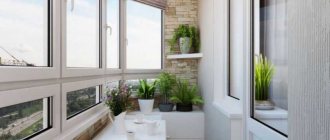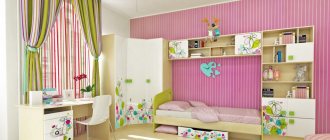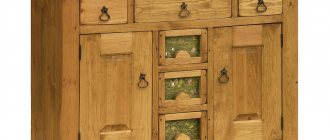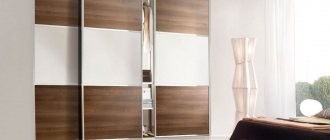Today, many are concerned not only about personal safety, but also about the safety of their own property. Therefore, methods of saving your property are extremely relevant today.
If half a century ago the call to keep money in a savings bank was quite acceptable, at the moment the majority of residents of our country have abandoned it, and there are quite reasonable explanations for this.
How to preserve your property today is a rather pressing question for many. This applies to both personal property and property of private companies. All possible safes solve such problems to some extent.
Important to remember! There is no safe that cannot be opened. It all depends on the time and funds needed for this. Therefore, we will consider reasonable options for protection from lovers of easy money and answer the question of how to choose a reliable safe?
What types of safes are there?
Currently, there are several types of safes used by clients:
- Freestanding office safes or floor safes
- Built-in safes
- Armory
- Automotive
Safes can differ not only in the degree of protection against burglary, but also in their resistance to fire. Accordingly, the higher the degree of protection, the higher the cost of the safe.
Types of safes
Safes for the home are divided into burglar-resistant, fire-resistant, built-in, furniture and weapons safes.
Burglar-resistant models are made of steel and are divided into twelve degrees of protection. For a house or apartment, a model with degree III protection is sufficient. The thickness of the walls ranges from 3 mm to 6 mm, and a third layer of sand or reinforced concrete is laid between them. Naturally, such safes weigh a lot. In addition, they are equipped with complex locks, with degrees of reliability A and B. Any complication aimed at increasing the protective properties of the safe is reflected in its cost, which goes up.
Stylish burglary-resistant safe with an interesting handle in the shape of a buffalo head
Black and white safe, stylized as a suitcase
Luxurious “gold” safe for a luxury style interior
Fireproof safes are also made of metal sheets with an additional layer, but they do not have complex locks and breaking them is not difficult. The metal sheets are thin, no more than 1.5 mm, but a layer of foam concrete and vermiculite is responsible for fire resistance. The latter contains bound water, which is released when heated and prevents the safe from catching fire.
Compact fireproof safe
Fireproof safe with digital lock
Bright and solid fireproof safe
A built-in or built-in safe is popularly called a hiding place. It is placed in the wall and its location is skillfully disguised. The level of security of such models corresponds to class 1.
Furniture safes are most often used for placement in apartments. They are installed in cabinets, mezzanines or cabinets, and are equipped with highly complex imported locks designed specifically for safes.
Compact furniture safe, milky color
A beautiful pink safe will protect women’s favorite jewelry from attacks.
Gun safes are a special category, in demand among people who are passionate about hunting and collectors.
Luxurious gun safe covered in animal skin
A gun safe is a must-have item for gun owners
Having dealt with the types, let's move on to how to choose a safe for a house or apartment, taking into account its area of application.
Security of safes against burglary
According to the standards of our country, all safes are divided into thirteen classes. And the higher the class of the safe, the longer it will take to open it.
The first class includes safes with minimal protection. They can more simply be called iron boxes.
Therefore, when choosing the class of a burglar-resistant safe, you should decide from what type of burglary it should protect its owner. If these are just random passers-by, then a safe with minimal protection may be enough.
Purpose of the safe
Establishing the purpose involves determining the object of preservation. In other words, in order to understand what kind of safe you need, first of all you must decide what you will store in it; depending on this, its size will be selected.
According to their purpose, all safes are divided into:
- Armory
- Office
- Furniture
- Data safes
Gun safes
These are safes, the installation of which is not a whim, but a necessity. After all, if you have a weapon, you are required by law to store it only in a special safe, thereby limiting access to it for those who do not have the right to use weapons. Moreover, a safe usually needs to be selected for a specific type of weapon. If you decide to choose a decent safe for three-barreled weapons, then your choice may well fall on VALBERG Sokol (Russia) costing 1600 UAH. If you are the owner of 1 barrel, then you can purchase a VALBERG Sparrow costing about 850 UAH. There are also universal gun safes, for example, VALBERG Safari, but its cost is much higher - about 5,000 UAH. There are even safes whose price reaches up to 30,000 UAH, for example, VALBERG Arsenal EL GOLD. Such safes are designed to store several weapons at once, and completely different ones.
Office safes
These safes are not called that because they are intended exclusively for installation in the office. The name suggests that in the office you will want to put not only money and jewelry, but also documents in the safe, so the size of such a safe is usually about 1.5-2 times larger than a regular furniture safe. In addition, such a safe is free-standing and can easily be placed under a table or in any other convenient place. If this is your goal, then you can consider Valberg ASM 46 (Russia), approximately 1900 UAH. (dimensions 46X44X35.5 cm). The safe has the ability to be anchored to the floor, and there is also protection against drilling the lock
Of the larger options, you can pay attention to Paritet-K B.120.E, the cost of such a model will be approximately 6,000 UAH. Of the ergonomic models, we can recommend Safetronics M 12/4 (Slovakia), which will cost approximately 6,500 UAH
Data safes
This is a tribute to modern technology. Such a safe will reliably protect digital and magnetic media from fire. The inner chamber of such a safe is a heat and airtight chamber with a sealed door. Such a safe can resist fire for approximately 2 hours. The leaders in the production of data safes are Fichet (France) and Kaso (Finland), however, the Topaz BDS-T510, costing about 3,000 UAH, is also a good option.
Of course, this list is not complete; there are also deposit boxes, cash boxes, and tampon cash desks, but all of this is more likely to have a narrowly targeted purpose and is not used in everyday life. That is why we decided not to clutter your head with unnecessary information and consider only those options that are used by a person in everyday life.
Where to install the safe?
The location where the safe is installed also affects how effectively it performs its functions. Built-in small safes are placed away from prying eyes and they try to make them as inconspicuous as possible.
On the other hand, key safes are placed in a visible place. Therefore, the choice of location for the safe largely depends on its purpose.
What should you consider when choosing?
Before purchasing a safe for your home, you should decide what exactly you need. So, we have selected for you a list of five main points that you need to rely on when choosing a safe.
- First of all, you should decide on the subject of storage (what exactly will be in your safe).
- You also need to find out what exactly the valuables you have chosen will be protected from (burglaries, fires).
- You also need to decide on the dimensions of your future safe (height, width), as well as the dimensions of the internal space. You need to count on the fact that over time the internal space will need 25-30 percent more.
- The next step will be the installation location. Agree, this will also depend on the previous point (if the safe is very large and heavy, then you will probably install it on the ground floor or in the basement). In addition, there are built-in safes that can be perfectly disguised, while decorating your interior, but you will lose weight and size.
- Before you choose a safe for your apartment, you still need to figure out the last, but no less important point - the type of lock. Today you can be offered electronic, key or mechanical locks. You can also combine several locks on one safe. It's very reliable.
Next, to make the final choice, you need to go through each of their types.
Safe installation
Installation of a safe, especially if it is a built-in safe, should be planned at the time of construction of the building or the start of major renovations.
So, to securely fasten the safe in the wall, it is necessary to lay special structures, which are then filled with concrete.
At the stage of finishing work, it will be quite difficult to carry out this work and the reliability of such a design will not be great.
Types of modern safes
To store various valuables, people use welded metal boxes called safes. The door of such “hides” is monolithic; they are also equipped with a locking system and locks of various degrees of complexity. If you are choosing a safe for your apartment, then give preference to a compact model that is easy to use and can fit perfectly into the interior.
A safe for a home (apartment) should be compact, fit perfectly into the overall interior of the room and be easy to use
Table. The main types of home safes.
| Name, photo | Short description |
| Burglar-resistant | The burglary resistance class of such products varies from 1 to 12, although for domestic use, according to experts, a class from 1 to 3 is quite sufficient. It is better to store jewelry and money in higher-class safes that have protection against sawing and reliability class A or B. |
| Fire resistant | They are good because they reliably protect valuables from fire, but their burglary resistance is not very high. These safes are made of steel sheets, between which there is a layer of material with low thermal conductivity. There are 3 fire resistance classes for these safes - B (can withstand up to +170 degrees, which means the paper in them will not char), D (can withstand up to +70 degrees, you can store film and photographic films in them) and DIS (no more than + 50 degrees). |
| Fire-resistant | These are universal products that are resistant to fire and burglary. Made of thick steel sheets, between which material with low thermal conductivity is laid. They differ in that they are equipped with a deadbolt lock (key, code, electronic or mechanical). |
Safe Aiko T-40.ELBurglary resistance of the safe
Also note that combination safes have 6 protection classes in terms of burglary resistance. If we talk about fire resistance, then, according to test results, they are able to withstand heat up to +1000 degrees.
Fireproof and burglary-resistant safes
In addition, safes are classified by type of installation - in this case they can be:
- furniture;
- jewelry;
- installed on shelves, in niches;
- built into the wall (followed by masking with some decorative object - for example, a painting, a mirror);
- decorative (made in the form of a piece of furniture - a cabinet, sofa, chest of drawers, etc.).
Safe for the home Specialized built-in safes are designed for installation in the wall. Not everyone will guess that this decorative cabinet is actually a fire-burglar-resistant safe
Which lock to choose for your safe?
An important element of safe protection is the lock. Today there are several types of locks used in safes:
Office shelving - characteristics, application options and tips for choosing a location (125 photos)Office sofas - features of selection and use in the office interior. Technical characteristics and application features (110 photos)
Furniture for staff - 70 photos of the best ideas, tips on the use and arrangement of furniture
- Mechanical, the cheapest and most common
- Code
- Electronic
Biometric, the most expensive option. But most often, several types of locks, two and sometimes three, can be used in one safe, taking into account the degree of protection of the safe.
Which lock to choose largely depends on the client’s preferences and financial capabilities.
In addition, many people pay attention to the aesthetic component of the lock and the safe itself. Therefore, when choosing a safe, you should pay attention to the photo of the office safe offered by the seller.
Best lists
- Best price.
- Floor.
- Small in size.
Let's move on to a detailed description of each category.
Best price
At a low price you can purchase a Safewell200B2 model safe. It has several ways of fixing it - to the wall, flooring or furniture.
| External dimensions | 200X300X220 mm |
| Door opening angle | 90 °C |
| Weight | 9 kg |
| Lock type | key |
We advise you to study - The latest trends in the use of Scandinavian style in the interior
Cost: 1636 rubles.
safe Safewell200B2
Floor
The Onix LS-30 model deservedly falls into this product category. The safe is equipped with an electronic lock and an emergency key. There is also a code selection protection system. Fastening is provided both to the floor and to the wall of the room.
| External dimensions | 300x380x300 mm |
| Inner size | 296x376x250 mm |
| Weight | 12 kg |
| Guarantee | 3 years |
Cost: from 5569 to 7190 rubles.
safe Onix LS-30
Small-sized
Small size model AIKO T-140 KL. The thickness of the front wall is 2.8 mm, the side wall is 1.2 mm. Provides for wall mounting.
| External dimensions | 140x195x140 mm |
| Inner size | 138x193x95 mm |
| Lock type | Key |
| Weight | 3 kg |
| Volume | 2.5 l |
Price: 1660 rubles.
safe AIKO T-140 KL
Safe maintenance
An important element of long and reliable operation of a safe is its regular maintenance. Since any safe has a mechanical component, it is this that must be regularly maintained.
Because the safe’s refusal to open occurs at the most inopportune time. And calling a master safecracker will take a lot of time and money.
Furniture for an executive - the best ideas for selecting beautiful and functional furniture (video + 100 photos)Executive desk: modern options, application features and location options (130 photos)
Who needs a home safe and why?
Almost everyone has valuables at home that are unwise to store in a regular desk drawer or chest of drawers. This could be ladies' jewelry, valuable documents and, of course, cash. Proven “reliable” places, such as banks with cereals or shelves with books, have long been well known even to novice robbers. And in this case, only a safe will help save property, because even if the apartment is protected from burglars by a reliable metal door, the risk of penetration still remains.
One of the ways to store money and valuables is a safe deposit box, but it should be remembered that when concluding a lease agreement, the bank is not responsible for the contents if such a clause is not included in the agreement in advance.
Modern manufacturers offer several types of home safes, and it is best to choose which safe is needed in a particular case depending on its purpose.
- If you plan to store securities and documents
, then A4 folders should fit freely in the safe. It is desirable to have at least one shelf so that you can organize more or less convenient access to the contents. At home, compact safes are usually used that can simultaneously hold both documents and money. - To store money and jewelry,
you can choose a safe of any size; size restrictions in this case are dictated only by the amount of contents. - Gun safe
. The legislation of the Russian Federation requires that weapons be stored in locked metal cabinets or safes. Accordingly, any person planning to purchase, for example, a hunting rifle, is obliged to take care of purchasing a safe, especially since there are many models designed to store weapons of all types and sizes.
Let's say the potential owner knows exactly what he will protect against theft, which means he has already determined the type of safe. But there are many more nuances that you need to pay attention to when choosing.
Types of home safes: choose to suit your taste
One of the selection criteria is the method of installing the safe
, which depends on its size and the characteristics of the room. It is very important that the safe is attached to the surface in one way or another, because if a burglar has the opportunity to take the safe out of the apartment, he will take it out and open it without interference in a quiet environment. This will not be possible with a fixed safe, so there is a high probability that all the efforts of the thieves will be in vain.
- Safes attached to the wall or floor
. Correct fastening makes the safe almost invulnerable to robbers. In the case of gun safes, the need for fastening is generally prescribed by law and determined by GOST. For fastening, special anchors are used that can withstand high tensile loads. Safes can be attached to concrete, brick or natural stone. Typically, the design of the safe provides special holes for bolts. It is not recommended to drill such holes yourself, especially in fire-resistant models: the tightness of the housing will be compromised, and therefore the protective properties. In addition, such manipulations can lead to termination of the certificate for the safe. - Built-in safes
are especially popular among buyers. Such a safe does not take up extra space in the room and provides not only reliable, but also hidden storage. Their second name is cache safes, since they are mounted inside the wall and are usually hidden behind a carpet, a picture, and so on. Built-in safes belong to the burglar-resistant class (we will discuss this classification below), but their side walls are thinner than the front panel. This is due to the fact that when installed correctly, the side walls of the safe are protected from penetration or exposure to fire by the thickness of the wall of the apartment or house. In addition, a built-in safe is almost impossible to take out of the room, since it is not so easy to get it out of a niche: it is mounted without gaps between surfaces. The only difficulty that may hinder installation is insufficient wall thickness. According to the installation technology, it should be ten centimeters greater than the depth of the safe itself, so before purchasing it, you should carefully calculate all the parameters. - Mini-safes
. Already from the name it is clear that these are small-sized safes, which are usually installed in furniture: sideboards, cabinets, chests of drawers, etc. Typically, this type of safe has single walls (which are thinner than the front panel) and is mounted to the floor or wall. The protection class of such structures is quite low - from 0 to 1, so most often they are used to store something out of the reach of children or household workers. Such safes are unlikely to be useful for protection against thieves.
The first industrial production of safes was opened in Great Britain in 1795.
Photos of safes for the office
Reliable protection: from thieves and more
The main characteristic of safes is their ability to withstand unauthorized entry or fire. Depending on these parameters, all safes can be divided into several categories.
Burglar-resistant safes
The burglary resistance classes of safes are regulated by GOST R 50862-2012 “Safes, safe rooms and valuable storage facilities. Requirements and test methods for burglary resistance." According to the standard, a burglar-resistant safe is a device that has certain protective properties that are resistant to burglary. The burglary resistance class is determined by the minimum resistance value of the safe
, established during testing. Typically, during tests they try to break into a safe using a variety of tools - from diamond cutters to an acetylene torch. The test should result in partial or complete access through the door or enclosure or by destroying the locking mechanism. When determining the burglary resistance class, the time of resistance of the safe and the number of locks of a certain resistance class are taken into account.
When choosing a safe, you should take into account this nuance: in most cases, safes made in Russia and China are opened by burglars faster than those made in Europe.
. This is explained by the fact that in Europe, companies involved in certification have much higher protection requirements for manufacturers, and as a result, safes with European certification compare favorably with their Russian counterparts in terms of the level of protection, internal content, and the number of additional “tricks”.
According to GOST, burglar-resistant safes are divided into 11 classes, including zero - the minimum
. A professional burglar can open such a safe in five minutes, but a fifth-class safe with an electronic and key lock will take him from five hours to several days.
For apartments or houses, safes of the first to third classes are most suitable. For example, for apartments with security, a second-class safe from the Valberg or MDTB brands with sixty-minute fire protection is sufficient.
It is advisable to place safes of zero and first class in premises that are already armed. Second class safes do not require additional protection provided they are securely attached to the wall or floor. Safes from the third to the fifth class are used to store especially valuable contents; they are used even in banks and jewelry stores. Higher-class safes for storing large valuables are most often made to order by Russian manufacturers, and European models can be found in domestic warehouses immediately if desired. Such safes are very expensive; their wall thickness can reach 120 mm, and their weight can be more than a ton.
Fireproof safes
Their main purpose is to protect the contents from fire
; they are not designed for burglary protection, and this must be taken into account when choosing. In the manufacture of such safes, materials with low thermal conductivity are used, for example, aluminum plates up to 1.5 mm thick. The space between the plates is filled with foam concrete. The locks on fireproof safes are also not particularly complicated.
According to GOST 34360-2017 “Fire-resistant safes. Requirements and test methods for fire resistance” fire-resistant safes are divided into four classes [1] depending on their protective ability (see table 1).
Table 1. Fire resistance classes of safes according to GOST 34360-2017
| Fire resistance class | Heating time to fire resistance limit, min. | Storage object |
| 30LB | 30 | Documents, money, securities, with the exception of magnetic storage media that are damaged at temperatures below 172°C |
| 60LB | 60 | |
| 60B | 60 | Banknotes, documents, securities, including those on heat-sensitive media |
| 120B | 120 |
Fire-resistant safes
Universal designs that can protect the contents from both burglary
and fire. They usually have average stability in both respects, but this is the best option for apartments and private houses. This category is represented by Russian and foreign manufacturers. There is another important parameter for the reliability of a safe - its lock. Safes are also divided into several groups based on the type of lock. According to GOST R 51053-2012 “Safe locks. Requirements and test methods for resistance to unauthorized opening” for safe locks there are four classes of resistance to burglary - A, B, C and D. You can view the catalog here.
Safes with electronic lock
A coded electronic lock solves the problem of storing keys - it is a reliable and very convenient option.
For those who constantly lose them, an electronic lock is a good solution, but at the same time there is a need to learn the password to the safe by heart. Experts categorically do not recommend recording such information. Among the advantages of an electronic lock are the ability to reprogram it, the presence of several levels of protection, in addition, such a lock opens very quickly - just enter a code. Disadvantages are the lock's dependence on batteries (batteries or accumulator), sensitivity to changes in environmental conditions, and the high price of the safe itself.
Safes with key lock
Typically, in this case, a lever lock is used - it is reliable and does not require memorizing digital combinations.
However, it should be borne in mind that the strength of the lock depends on the degree of protection of the safe, and there are three categories - A, B, C and D. Therefore, the simpler the safe, the less secure the lock. If you use the safe frequently, the key lock is less convenient than its counterparts. A significant disadvantage of such a safe is that the key will have to be carried with you at all times or stored in a very safe place - the risk of losing the key is extremely high.
Safes with combination mechanical lock
Today this is an extremely unpopular type of lock
due to its inconvenient use. The disadvantages of a mechanical combination lock are the need to remember the digital code, and also the fact that opening the safe will take quite a lot of time, because the handle will have to be turned several times. In most cases, people who buy such a safe tape the dial so as not to lose the code, because they forget how to use it. In a situation with a non-programmable lock, another difficulty arises: if the owner has forgotten the code, then the safe will need to be opened.
Safes with electronic key lock (master key)
Essentially, safes of this type are the same safes with an electronic lock, but equipped with an emergency opening system with a special key
. The master key system duplicates the electronic lock with a mechanical key. Such a system can be useful if the lock keypad has been damaged or the power supply has stopped. Small furniture safes are most often equipped with a “master key”. After emergency opening, the owner can reprogram the lock or leave the previous code.
The disadvantage of such a lock is that an attacker, if he has a master key, can easily open the safe without even knowing the code.
Safes with double electronic key lock
These are the most reliable safes
, equipped with two locks at once - electronic and dependent key. At the same time, the key lock is not an emergency lock and does not duplicate the electronic one - the safe cannot be opened until the code is entered and the key is turned. Such a system is usually installed on high-security safes, since it reliably protects the contents from intruders.
